Genre: Racing Developer: Supersonic Software Publisher: Codemasters Players: 1-4 Released: 1995
While the nanomachines of today are capable of entering the body and fight microscopic viruses, back in the late 80’s we had to contend with Micro Machines, medically useless miniature cars that were about the size of a Penny Racer but sported a standard car body shape like a Hot Wheels toy. Micro Machines were a hit for a while, due in part to the commercials being voiced by John Moschitta, a man who spoke really fast because for some reason fast talking represents tiny scale car models well. Anyway, they were enough of a hit to spawn a licensed video game for the NES. An arcade style top-down racer, it was a great game on a shiny cartridge and received equally shiny, glowing reviews.
It didn’t take long for Micro Machines to find its way to the Genesis, albeit just as a cleaned-up port of the NES game. Thankfully, Micro Machines 2 was announced for the Genesis, taking full advantage of its enhanced capabilities and blast processing. Micro Machines ’96 Turbo Tournament, an updated release of Micro Machines 2, followed suite and as such is not a brand new game but rather an enhanced edition of the sequel which includes new and updated race courses, new vehicles, new race modes, a full featured track construction kit, and a unique cartridge innovation which helps make the game among the most fun titles available on the Genesis.
As with Sega’s own Sonic & Knuckles lock-on cartridge, Micro Machines Turbo Tournament ’96 is loaded onto a unique bit of plastic named the Joypad Cartridge (J-Cart). A J-Cart is a cartridge which has two controller ports built right into its face, allowing for multiple players without the use of any additional accessories. While the J-Cart would be used in Codemaster’s Micro Machines Military as well, it remains largely a forgotten innovation as with most items and games released near the end of the 16-bit system’s life. No one can dismiss the availability of extra ports, and they certainly do enhance the multi-player options quite a bit with their inclusion right on the cartridge (though it does come with a risk of disrupting the cartridge’s seating in the console should someone tug on the controller cable too much).
That Codemasters would go through such lengths to include additional controller ports on the cartridge itself should tell you that Micro Machines ’96 is designed to be played with as many people as possible. The game even shipped with a couple of small books so that owners of the game could send out invitations to a Micro Machines ’96 video game tournament and certificates to award winners of those tournaments. Micro Machines ’96 is a terrific party game and oodles of fun. This cannot be stressed enough. The game allows up to eight players via sharing controllers to ram and race each other around dozens of tracks in a variety of vehicles. Multiplayer plays much more like an elimination match than a race as everyone will be jostling to knock everyone behind them in their wake to gain more share of the tug-of-war style life meters. It’s a rare party that both can reward skill and familiarity but also be simple and easy enough that everyone can enjoy, and Micro Machines ’96 remains one of the best.
The control is simple enough where anyone can pick up and play. Cars can be turned left or right and put into drive or reverse, which also serves to slow down the vehicles’ speed. Courses featuring jets are different in that they are always accelerating – you can only slow down their speed somewhat, and instead of bumping off an object, you crash and respawn back on the track. Another gameplay change presents itself when there are more than four cars on a track – cars cannot bump into each other until there are four or less present which does change the way the game is played and, unfortunately, is not quite as fun as the hit-and-run action of a four-player match.
The game looks as good as it plays. The tracks detail and animation are fantastic, and the now familiar theme — tiny vehicles racing in larger than life “real world” courses — is always a joy to watch and play. The racetracks will take you from gutters and bathtubs to chemistry labs and billiards tables. While the courses are generally flat with little to no parallax scrolling, some courses have more interactive obstacles such as blow torches, sponge ferries, and rotating corn cob bridges. It is this unique approach to the top-down racer which gained the original NES game so much attention, and Micro Machines ’96 does not disappoint. The vehicles are well colored and proportioned to keep the chaos in check, and menu layout and character graphics help round out what is a great looking game. If there is one complaint about the graphics, it would have to be that due to the nature of the game, the track layout isn’t always easy to identify, especially during a race. The small objects which loosely form the path can sometimes be mistaken for generic track detail; however, the game does outline the route before the match, and it’s nothing which can’t be overcome after a couple of plays.
The replay value is amazing as well. The new time attack mode along with the various challenge modes make sure the game styles fun and interesting for a single player, and the ability to rename any of the 16 characters and save individual statistics and best times per track allows players to enjoy it as a “serious” racing challenge. The included 60 plus tracks ensures there’s plenty of racing to be had, and with the new construction mode, the number of track possibilities is nearly infinite, or at the very least great enough for me to not want to bother counting all the possibilities. The track editor is well structured with a wide assortment of pieces and themes along with the ability to test the track during creation. Plus, with the J-Cart’s NVR memory chip, the game can save your creations for about 100 years, at least according to the manual.
Micro Machines 2 is a fantastic game, and Turbo Tournament just improves on it in every way. The only thing remotely negative I can say about the game is the absence of music during the races. While the menus cycle through a couple of well-done bass drum heavy rock themes, the game is mostly silent once the action begins. Then again, with the revving engines, tire squeaks, thumps, and other sound effects, perhaps music would just get in the way. Honestly, you’ll be having too much fun to miss it.
SCORE: 9 out of 10

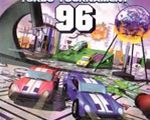
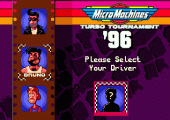
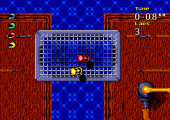
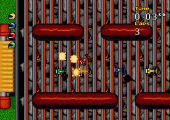
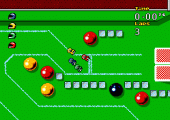
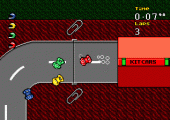
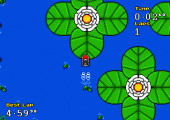
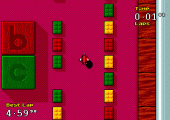
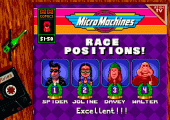
Recent Comments